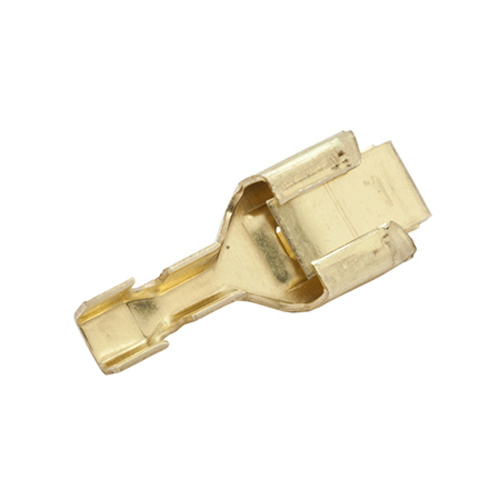Buttoned everything back up after another test at idle. In that test I felt the backside of the transpo VR. It was warm, so I cut up a finned heatsink that westend mailed me over a year ago, and thermal epoxied it to the backside.

Each full turn of the potentiometer yields a 0.3v change.
At 8.5 of 10, the voltage is 14.9v so I assume max voltage will be about 15.35v.
When the engine is hot, at Idle in gear at 525 rpm, voltage slowly sags from 14.4 to 14.1v. This is with a battery requiring 24 amps to be held at 14.4v. I previously measured 8.2 amps current required just to idle the engine, so ~32.2 amps total output. Slight rpm increases and voltage goes back upto 14.4v, not quite instantly though.
Twisting the Dial upward, at hot idle when voltage sags, is effective. But when I kept bumping it upward, to 14.7v at hot Idle, then the check engine light came on.
When I parked I checked computer codes via the 'key dance' Code 46 was present.
Bob O’Neill and Bob Lincoln wrote:
Code 46 is triggered when the voltage sense input is more than one volt above the target voltage for 20 seconds, as sensed by the computer. When code 46 is triggered the power limited light will be lit and the system will not enter limp mode. When the charging voltage falls below one volt of the target voltage the power limited light will go out but the code will still be stored.
whether the above quote is 100% accurate to my Van is ...unlikely. But the light came on at 14.7v and 13.7 was a favorite setpoint of the ECM's VR.
After checking codes I restarted engine with Pot set to 7.0/14.4v and the check engine light went out after starting and has remained off since.
Parking for the night and continuing to idle, the VR's backside, the black heatsink measured 127f via my IR temp gun and the whole casing was warm. Perhaps a 60mm fan that comes on with engine running might be beneficial.
When engine coolant and engine oil were at normal temps, The alternator was 119f, and this rose to 140f as I continued to idle, testing, with battery still requiring ~20 amps to be held at 14.4v and the ~8.2 amp draw required to run engine. So Idling significantly increased alternator temperature compared to moving.
At Hot idle, field current was 2.63 amps for 28 amps total alternator output at 14.4v. Revving the engine to 2k rpm max and field current dropped to the 1.3 amp range. The more loads I turned on, the more field current was required.
With high beams, fog lights, and blower motor on high, the max amps I saw was 8.23 at idle, revving the engine and field current dropped by half.
The 'S' terminal for the switched 12v+, that wire only registers as passing 0.02 amps at idle. Guess the 14 awg I used to trigger it was a few thousand degrees of overkill. Wish I tested that before running that nice 14awg yellow wire to it.
The 10 Ohm resistor thermal epoxied to the larger heatsink maxed out at 127f idling cold and warming up a full 100 degree F drop from previous test without extra heatsink, engine cover off, mechanical engine fan barely turning. The black part of the heatsink furthest away measured 125.5f so it appears the resistor/thermal epoxy heat transfer is pretty efficient.
I started the engine with 13.2v setpoint, which is was the solar was able to maintain on its own at the time, so the alternator load was practically nothing, the engine note was nice and smooth.
When bumping voltage upward to 14.7 and ~32 amps were required to get battery to 14.7v, engine note changed noticeably with the extra load of the alternator producing 40+ amps and responded in kind when I lowered voltage back to 13.2v for basically zero alternator output.
A better test will be a battery depleted enough that it requires 60+ amps to achieve 14.4v..
I put the Bourns counting potentiometer on my gauge cowling.

So Mission Accomplished. My ECM's whack job of a Voltage regulator has been bypassed in such a way that the check engine does not illuminate if voltage is not allowed to exceed ~14.7, at least at idle.. I have a high Quality Bourne's 10 turn potentiometer on my Dashboard allowing me to choose any voltage ranges from at least 13.2 to 15.3v, thus allowing me total control of alternator output, within its capabilities at rpm.
Temperature data of the alternator casing at different output levels and different speeds should be interesting.
Consider the Jig, danced.
So far the experiment is a success.












